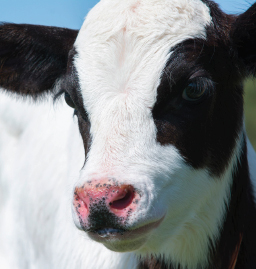NCEZID 2017: Outbreaks (Domestic)
E. coli in the US: CDC helped identify, stop outbreak from soy nut butter

In early 2017, CDC worked with partners to quickly investigate and stop a fast-moving outbreak of Shiga toxin-producing E. coli infections, which sickened 32 people—mostly children— in 12 states. The source was a brand of soy nut butter, which had never before been linked to an outbreak.
Brucella RB51 in NJ and TX: CDC investigates rare illnesses from raw milk
Investigations in Texas and New Jersey identified people infected with a dangerous germ called Brucella RB51. If not treated with antibiotics, Brucella RB51 infection can lead to serious chronic infections and complications. These illnesses occurred among people who drank raw (unpasteurized) milk from a dairy farm in Texas and a milk delivery service in the Northeast. CDC and state health officials warned customers not to drink raw milk from these dairies and advised those who consumed the raw milk to seek antibiotic treatment.
CDC worked with partners to investigate an outbreak of multidrug-resistant Salmonella Heidelberg linked to dairy calves.
Salmonella in the US: CDC investigates infections linked to contaminated papayas
In summer 2017, CDC and partners investigated four separate multistate outbreaks of Salmonella infections linked to Maradol papayas imported from Mexico. Investigators used CDC’s PulseNet system to identify 251 illnesses from 26 states, including 79 hospitalizations and two deaths.
Multidrug-resistant Salmonella in the US: CDC traces illnesses to contact with dairy calves
In 2017, CDC worked with partners to investigate an outbreak of multidrug-resistant Salmonella Heidelberg infections linked to contact with dairy calves. Testing conducted by CDC showed that isolates from ill people were resistant to multiple antibiotics, including first-line treatment. By the end of 2017, a total of 54 people from 15 states had been infected.
Norovirus outbreak at festivals: CDC helps prevent illnesses tied to drinking water
In June 2017, CDC’s waterborne disease and norovirus experts and state partners investigated an outbreak of norovirus infections in Pennsylvania after the disease was reported in attendees of three consecutive outdoor festivals. The suspected culprit was the venue’s septic system, which contaminated a drinking water well and creek water. CDC supported efforts to prevent illness at the venue, including handwashing promotion, boil water advisories, and disease surveillance.
Dengue virus in American Samoa: Epidemiologists respond to ongoing outbreak

Dengue virus is a leading cause of illness and death in the tropics and subtropics. In 2017, CDC experts traveled to American Samoa to help investigate an ongoing outbreak of the mosquito-borne disease. Epidemiologists conducted surveys at households and took hundreds of samples to determine where and to what extent dengue virus was being spread, leading to targeted prevention measures.
Seoul virus in the US: CDC shows outbreak linked to pet rats
Before 2017, Seoul virus had been found in pockets of wild rats in the United States, but never in pet rats. However, when pet rat breeders got sick, CDC investigated and determined that they were infected with Seoul virus, a type of hantavirus found in Norway rats. CDC provided epidemiologic and laboratory support along with guidance for preventing infection. Over 5 months, 17 people in 7 states were infected, and 3 were hospitalized.
- Page last reviewed: March 2, 2018
- Page last updated: March 2, 2018
- Content source:
Centers for Disease Control and Prevention
National Center for Emerging and Zoonotic Infectious Diseases (NCEZID)


 ShareCompartir
ShareCompartir